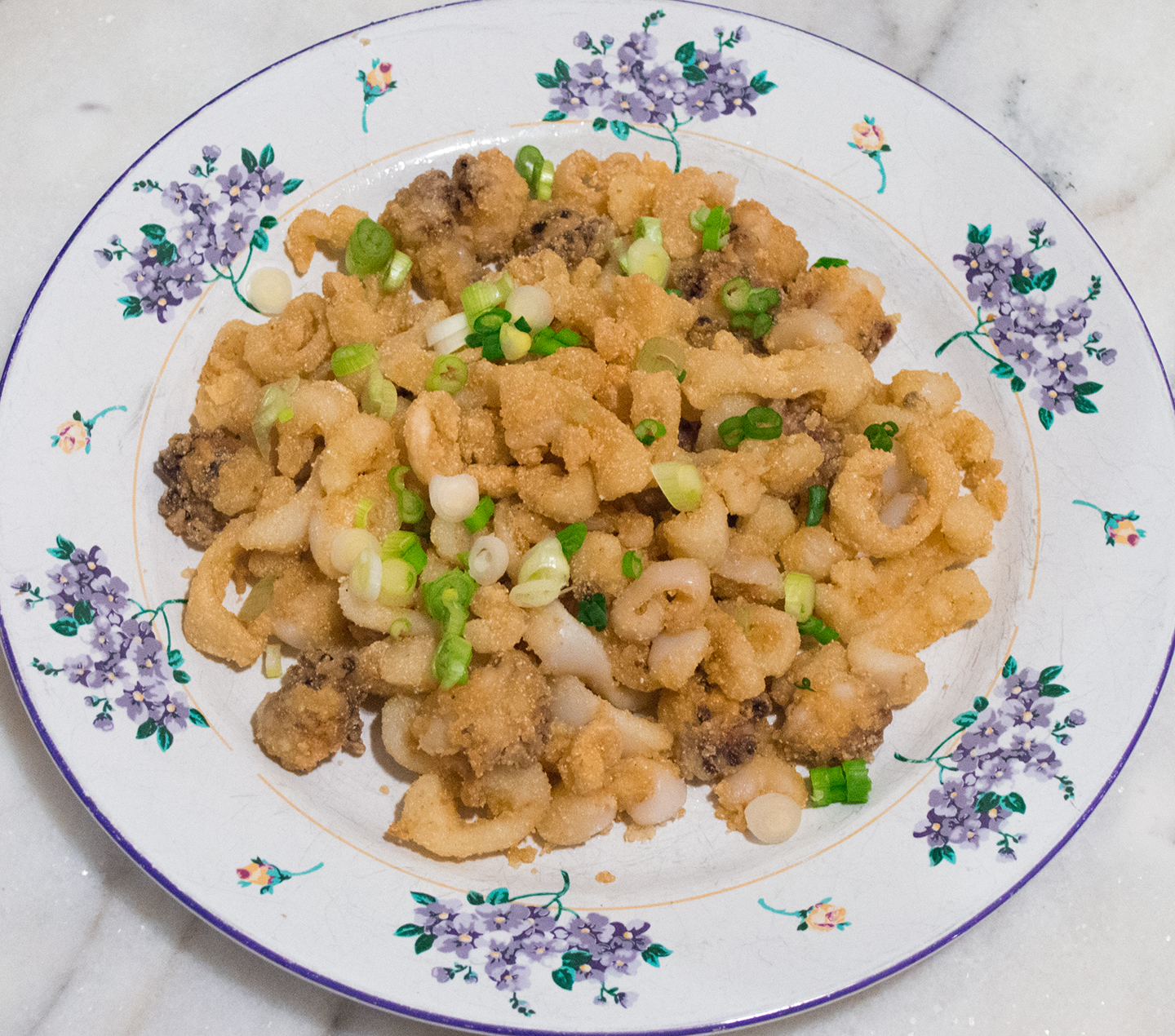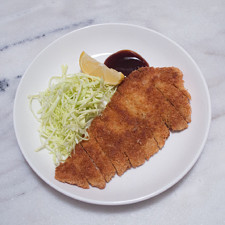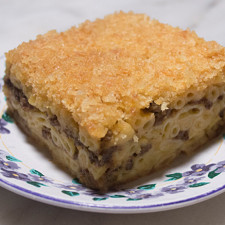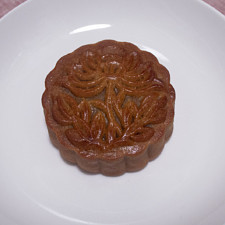
Kitty and I really enjoy eating Salt and Pepper anything. We’ve tried shrimp, prawns, and squid in restaurants, and have also found that places make chicken and pork versions too. Since cuttlefish are markedly close to squid, we wanted to try making this dish with it! We found some baby cuttlefish at the wet market, and just knew that it would be perfect for dinner.
I knew that a good covering of corn starch would produce restaurant-style salt and pepper (*insert your choice of protein here*); however, I wanted something with more crunch. I decided to cut the corn starch with some flour, and then add a textural component to give this whole thing a better mouthfeel. Knowing how dishes, such as Frittura di calamari –aka fried calamari–, are like without something like cornmeal, it was the obvious choice for me to add to my recipe.
The cornmeal is delightful! It makes all of those pieces so crunchy and so yummy! Plus, the thicker cuttlefish versus the thinner squid helps keep the pieces from overcooking and getting rubbery. No one wants to eat a super-chewy cuttlefish or squid. Really.
Recipe for Salt and Pepper Cuttlefish
- About 3-4 Servings
- Preparation:
- Cooking:
- Waiting:
Ingredients
- 450g (about 1lb) Fresh Baby Cuttlefish
- 30g (¼-cup) All-Purpose Flour
- 32g (¼-cup) Corn Starch
- 23g (3T) Cornmeal
- 3g (1t) Kosher Salt, plus more to taste
- 1g (½t) White Pepper, ground
- 650g (3 cups) Canola/Sunflower Oil
- 6g (2) Garlic cloves, thinly sliced
- 30g (2 medium) Scallions, chopped
- 10g (2t) Shaoxing Wine
- 1g (½t) Five-Spice Powder
Procedure
- Rinse and clean the cuttlefish. Discard any inedible parts, pat dry, and slice into edible portions.
- Combine the flour, corn starch, cornmeal, salt, and pepper, and mix thoroughly. Toss the cuttlefish pieces in the dry mixture, making sure all surfaces are covered. Let it sit for five minutes.
- While the cuttlefish are sitting, prepare your vessel: fill a heavy-bottomed pot with oil, clip on a frying thermometer, and turn the flame on high. Once the temperature reaches 325°F (163°C), lower your flame to medium. When the temperature reaches 350°F (177°C), begin frying the cuttlefish in small batches.
- Keep the pieces moving to get an even color. Once golden brown, remove with a slotted spoon onto a paper-towel-lined plate, about 3 minutes for each batch.
- In a sauté pan, heat up some oil on a medium-high flame, and toss the sliced garlic and chopped scallions with some Shaoxing wine for 30 seconds. Put the fried cuttlefish into the pan, sprinkle in the five-spice powder, and quickly combine. Turn off the flame, pour out onto a serving dish, and taste to see if it needs more salt. Add more as necessary. Serve with rice!
*Bunny Wisdom*
- If your cuttlefish are not cleaned by your fishmonger, you can clean them at home. You really only want to eat the tentacles and the main body. Rinse off any sand and debris. Run your fingers under the skin along the length of the body, separating it from the flesh and removing the side flaps. After the skin is removed, carefully run your knife along the sides of the cuttlefish bone, trying not to pierce the ink sac that is housed inside. Remove the bone, remove the innards, and section off the triangular tube. For the head portion and tentacles, cut away the beak and eyes. Cut the body into strips or square pieces.
- Most of the time, cuttlefish are already cleaned and de-boned for you, ready for cooking. In the chance that the fishmonger doesn't have them fresh, you can buy them frozen; in fact, frozen ones tend to be more tender. Just defrost in the refrigerator overnight before using.
- If you are using an adult cuttlefish for this recipe, slice the body into smaller pieces for easier consumption.
- I decided to use cuttlefish instead of squid because the flesh is thicker and more substantial. It can often be more tender than squid especially when frying.
- I use a mixture of flour, starch, and cornmeal to give it a good crispy crunch.
- High oleic oils are healthier due to less saturated fat, so I use canola or sunflower oil with higher levels of linoleic acid.
- Try to fry in small batches; overcrowding the pot can decrease the temperature of the oil and will result in soggy and oil-absorbed food. Maintain a frying temperature of 300-375°F (149-191°C).
- If you don't own a frying/candy thermometer, you can still test the temperature by placing the handle of a wooden spoon into the oil. If it bubbles along the edge of the spoon, you're pretty good to go. If your oil is starting to smoke, it's definitely too hot. Turn off the burner and very carefully slide the pot over to the cooler side of the range. Resume your task after 10 minutes.
- Remember! Don't throw your food into the oil; this can cause even more danger because that oil will splash or splatter out. If you're a bit fearful of frying, use your slotted spoon to lower your pieces into the oil.
- If I'm frying a large amount, I line a cookie sheet with paper towels so I can lay the cuttlefish flat. This will help keep the fried pieces from getting soggy.
- You can find five-spice powder in many Asian or Chinese markets. If you can't find it in your local market, you can make it at home! Mix equal parts (in weight) cinnamon, clove, star anise, fennel, and Sichuan peppercorn, and grind together. There are regional differences, sometimes including sand ginger, dried Mandarin orange peel, or other spices.
- Here is another five-spice recipe: 4 parts each of star anise, cinnamon, and Sichuan peppercorn; 2 parts clove; and 1 part coriander. Mix and grind into a powder.
**Here are some of the ingredients I use for this recipe. Please, feel free to browse and ask questions on anything you see listed below.**







No thoughts on "Salt and Pepper Cuttlefish Recipe."